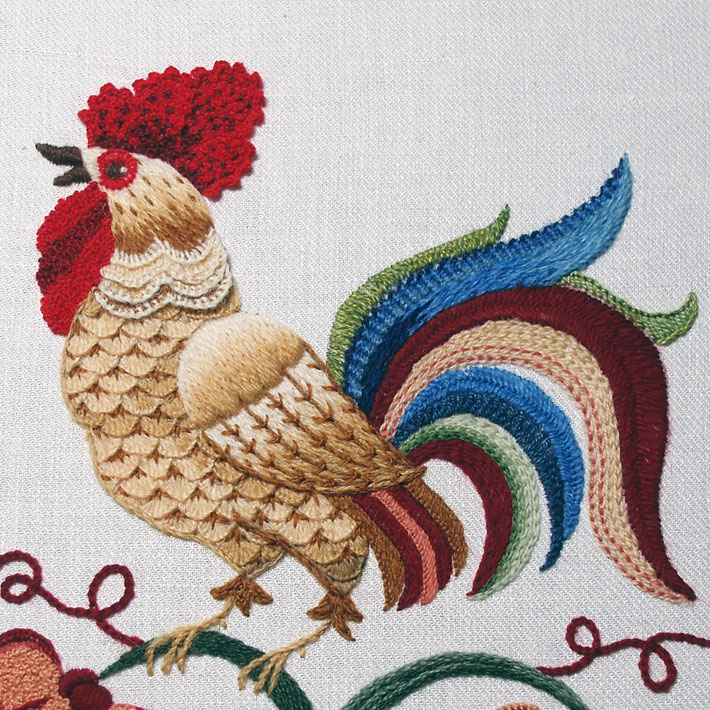
All images via Needle ‘n Thread
Crewel embroidery: It sounds like a Gothic horror movie. But it’s actually the name of a beautiful, ever-popular type of surface embroidery that’s been around for centuries. Know what it is and ready to dive into crewel embroidery? Check out our class!
The crewel style has a distinct look thanks to its signature wool thread and massive variety of stitches. In 17th-century England, crewel embroidery was used to embellish household items like bed curtains and covers. The technique worked nicely with the Jacobean-style designs of the era. Those designs still show up in all kinds of modern interpretations. Meanwhile, crewel embroidery keeps finding new fans.
If you’re thinking of embroidering your upholstered items — say, your chair cushions, decorative pillows or ottomans — the sturdy wool thread used in crewel work would be perfect. But since there’s some confusion about what crewel embroidery is exactly, let’s get a few things straight first.
What Makes Crewel Embroidery Crewel Embroidery?
Lately, people are using the term “crewel” to talk about a certain style, but that’s not quite right. Crewel work isn’t about any specific kind of design; it’s all about the thread. Crewel work requires crewel thread, a strong, long-staple thread spun from wool.
When you see a modern take on crewel embroidery that involves other fibers besides wool, it’s not technically crewel embroidery. It’s surface embroidery. Sure, it might have similar stitch work, but it’s not the same thing.
You can use any design you want when you’re doing crewel embroidery. True, you’ll typically see certain families of stitches in crewel work (although the variety of stitches you can work with is pretty much endless). But as long as you’re using wool thread, it’s legit crewel embroidery.
Choosing Threads and Fabric for Crewel Work:

Those 17th-century crewel embroiderers would’ve had serious FOMO if they knew about all the different kinds of wool and wool-blend threads we can choose from these days. There’s traditional Appleton wool, exceptionally smooth Merino wools, hand-spun wools dyed with natural vegetable dyes, wool blends mixed with other fibers such as silk, alpaca and mohair — and on and on.
One kind worth trying is Fine d’Aubusson, a wool thread produced by Au Ver a Soie in France. It’s a delight to stitch with and it’s smoother than other similar crewel wools. You also can find it in tons of colors that correspond with Au Ver a Soie’s silk lines, so it’s a nice option for mixing wool and silk in the same piece. Plus it’s affordable.
Keep in mind that when you’re picking out wool threads for crewel embroidery, it pays to choose one that comes in a wide range of shades. That will help you achieve good blending within color families and a full, richly shaded finish.
Appleton wools are a popular choice for traditional crewel work, not just because they’ve been around for almost 200 years; their wools are available in more than 420 shades.
As for the fabric: Classic crewel embroidery is worked on linen, either in a twill weave or in a regular weave. In modern crewel work, fabrics like wool, jute, silk, cotton and blends (and sometimes even synthetics) are all fair game.
If you’re trying to be historically accurate in your crewel work, though, there’s only one real choice: Go with linen twill.
Picking Your Stitch:
These families of stitches have been showing up in crewel embroidery for centuries, but there’s no need to feel limited by them. Within every family of stitches, you’ll find lots of variations that are perfectly adaptable to crewel work.
Line Stitches
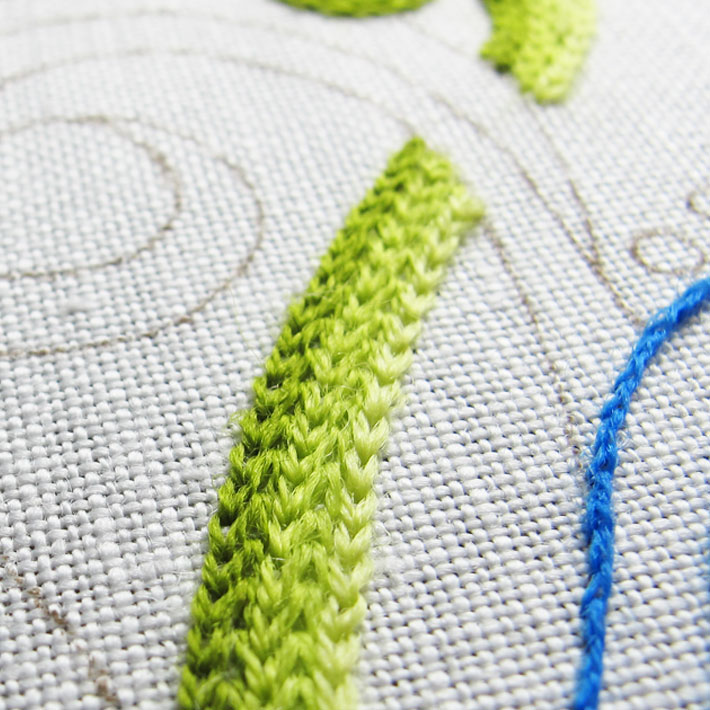
Line stitches like stem stitch, outline stitch, chain stitch and split stitch are popular in crewel embroidery, and ideal for the stems and tendrils you find in crewel pieces. Even knotted line stitches like coral stitch and Palestrina stitch work well.
When filling with line stitches in your crewel embroidery, you’ll start to see the importance of having a variety of shades available within a color family.
Solid Filling Stitches
The two solid filling stitches you’ll see most often in crewel embroidery are satin stitch and long and short stitch.
Satin Stitch
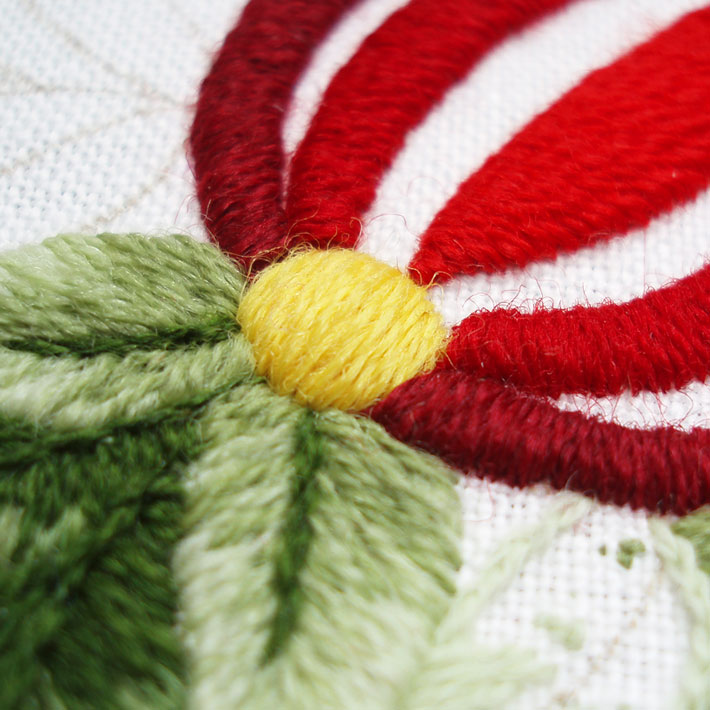
The satin stitch is used to cover small spans of space that require a solid filling. When working plain satin stitch by itself, be sure that the space covered isn’t too big, because the stitches can loosen over time. Choose satin stitch for spaces that are less than an inch at their longest span.
To get a really smooth edge, it helps to outline underneath the satin stitch first, by working a split stitch over the design line and then working the satin stitch over the split stitch. Padding the area you’ll be filling also helps the satin stitches lie smoothly, and exactly parallel to each other.
Padding also increases the friction behind the satin stitches so they don’t shift over time. Padded satin stitched spaces can be a little larger than satin stitched spaces without padding, because of the increased friction and tension that the padding gives the satin stitches.
Satin stitch can also be used to cover longer spans, if the stitches are somehow anchored. If they’re left without the additional stem stitching over the satin stitch, the satin stitches could become loose over time or simply not keep up their neat, parallel orientation.
Other methods of anchoring longer satin stitched areas involve couching stitches and laid work, as you’ll see below.
Long and Short Stitch
 Long and short stitch shading is very effective in crewel embroidery, where the wool threads are used to create gradually shaded, large or small filled areas.
Long and short stitch shading is very effective in crewel embroidery, where the wool threads are used to create gradually shaded, large or small filled areas.
Although beginners tend to think of long and short stitch as an advanced technique, it’s actually not. Especially when you’re using wool thread, which covers well and is pretty forgiving, long and short stitch is relatively accessible and easy to learn. Plus it looks striking, and lends depth and vivacity to your embroidered pieces.
Seed Stitch Filling and Isolated Stitches
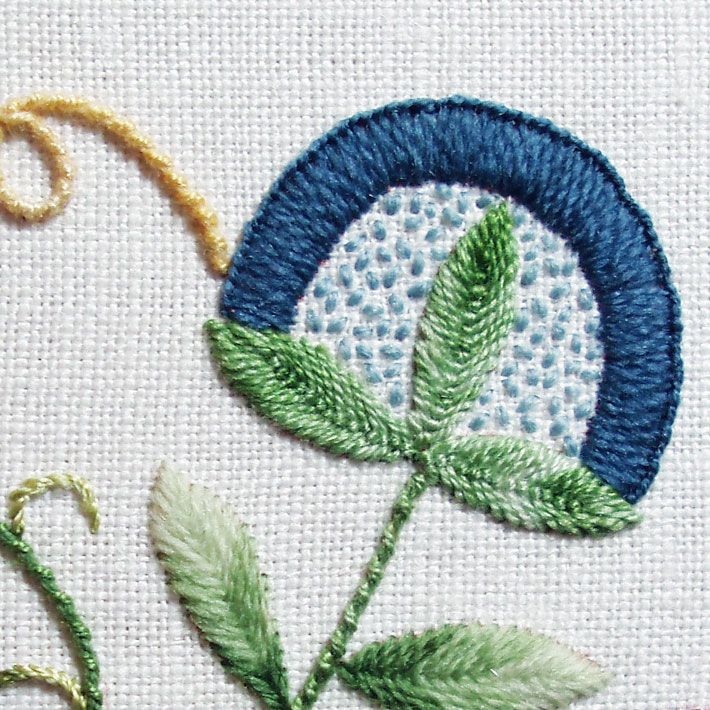
Seed stitch shows up all the time in crewel embroidery. Used as a light filling technique, seed stitch — which is made up of small straight stitches worked randomly — adds intrigue and texture to embroidery.
You can achieve all kinds of effects with seed stitch by changing the shades of thread or by changing the distance between the seed stitches. Seed stitches worked closer together will give the impression of a heavier filling, while ones spaced farther apart will create the impression of a lighter filling.
Other Isolated Stitches
Stitches like the detached chain stitch (daisy stitch, worked individually), or even small knot stitches like French knots or colonial knots, can also work as a light filling. It’s best to space them out randomly throughout a larger area or stitch them in some kind of patterned layout.
Couched Stitches and Laid Work
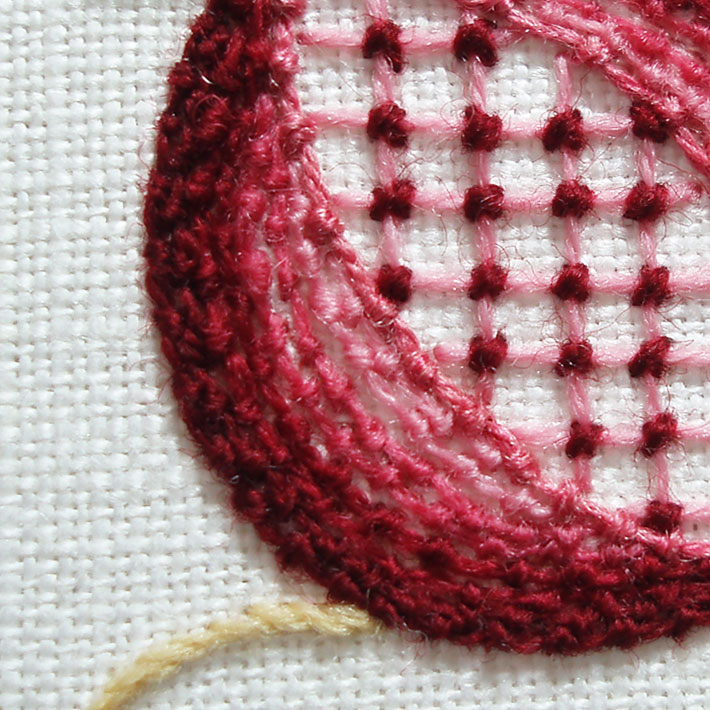
Couching is a two-thread technique, where small stitches in one thread are used to secure longer threads onto the fabric.
In crewel embroidery, couching can be used for line stitches. But you’ll probably see it more often in laid work, where long lattice stitches (long threads that criss-cross over each other) are couched down at intersections with another thread, to create patterns used to fill large areas.
What’s exciting about couching and laid work is that you can pick from a wide variety of lattice patterns. When it comes to filling patterns created with couched lattice work, your imagination can run wild. Lattice work provides tons of room for playing with patterns all you want.
Knots
French knots are the more commonly used knots in crewel embroidery. You can use them in isolation, as mentioned above, or to fill an area. Either way, they’re perfect for adding texture and interest to a crewel piece.
You typically won’t find bullion knots or certain other kinds, like Chinese knots, in regular crewel embroidery. But that doesn’t mean you can’t use them.
Remember, crewel work is more about the materials than the actual stitches, which are all ultimately just surface embroidery stitches. If you’re hankering to try bullion knots, definitely go for it.
Tufted Stitches
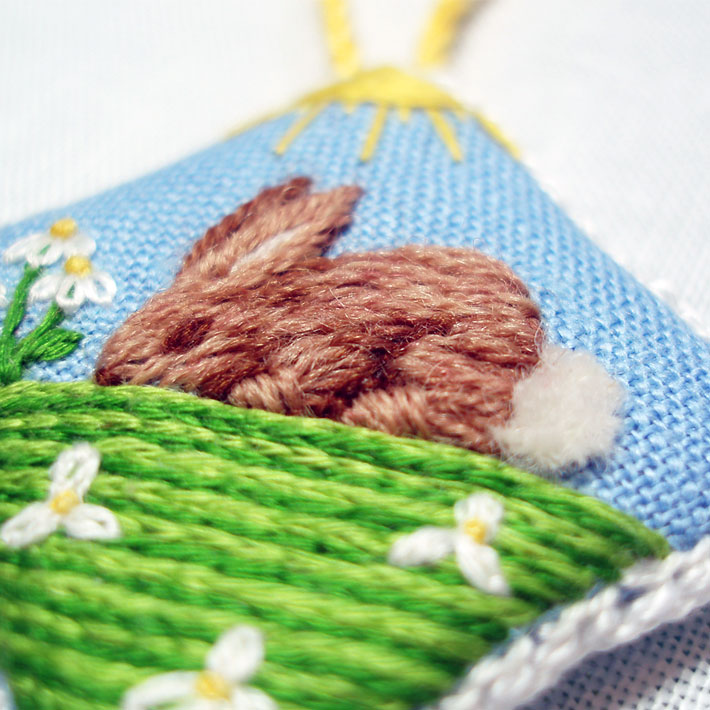
You can use tufted stitches like the Ghiordes knot (also called Turkey work), velvet stitch or Victorian tufting to add fluffy details to animals or flowers.
Other Surface Stitches
Again, there’s no real limit to the surface stitches you can use in crewel embroidery. Because many crewel designs often include leaves and other foliage, surface stitches like fly stitch and fishbone stitch can come in handy. They make an excellent filling for petal and leaf shapes.
Buttonhole stitch (blanket stitches worked close together) is a useful alternative for satin stitch on some shapes, too.
It all comes down to this: Don’t be afraid to experiment with non-traditional stitches for your crewel embroidery projects. Straying off the path is the secret to creating your own style — and enjoying yourself while you’re at it.

Absolutely perfect article, I had so many doubts about crewel work, and this was enlightening to me! Thank you so much!
I’d like to begin making crewel pillows as gifts. I’m an invalid now, hope to be better. Currently doing freehand designs. I’d like to buy kits with proper cloth and wool yarn. I live in rural SC, so mail order is only option for me. Can I buy through you? Thank you. Mary